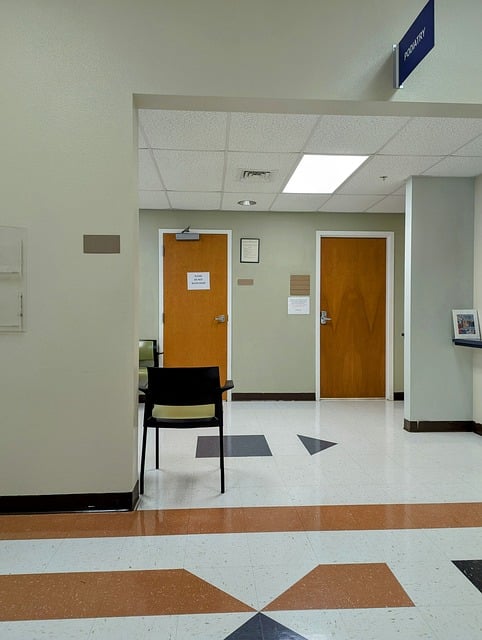Mediation Revolutionizes Medical Malpractice Settlement Speeding

Settlement mediation is a collaborative, neutral third-party process designed to expedite medical ma…….
In the intricate realm of healthcare, ensuring patient safety and securing justice for medical negligence are paramount. This is where the concept of medical malpractice settlement takes center stage. It refers to the financial compensation provided to patients who have suffered harm due to a healthcare professional’s substandard care or error. This article delves into the multifaceted world of medical malpractice settlements, exploring their impact, global implications, economic considerations, technological advancements, regulatory frameworks, and future prospects. By understanding these aspects, we can appreciate the role of settlements in fostering improved patient outcomes, driving medical excellence, and navigating complex legal landscapes.
At its essence, medical malpractice settlement is a mutually agreed-upon resolution between a patient (or their legal representative) and a healthcare provider or institution following an adverse medical event. It arises when a healthcare professional deviates from accepted standards of care, causing injury or harm to a patient. The key components include:
Historically, medical malpractice lawsuits have been a cornerstone for holding healthcare providers accountable. However, with varying legal systems worldwide, the process and outcomes differ significantly. Settlements often provide an alternative path to litigation, allowing for quicker resolutions and potentially more confidential negotiations.
The influence of medical malpractice settlement is felt worldwide, shaping healthcare delivery and patient safety measures. Key trends and regional variations include:
The economic aspects of medical malpractice settlement are multifaceted, influencing healthcare providers, insurance companies, and the broader economy:
| Economic Factors | Impact |
|---|---|
| Insurance Premiums: Malpractice claims data influences insurance rates for healthcare professionals. Higher claim frequencies or severe payouts can lead to increased premiums, impacting provider profitability. | Providers may face challenges in affording adequate coverage, potentially affecting their ability to offer quality care. |
| Healthcare Costs: Settlements often result in significant financial burdens on healthcare institutions, especially when multiple claims are involved. This can contribute to rising healthcare costs for patients and taxpayers. | Hospitals and clinics may implement risk management strategies and improve safety protocols to mitigate future claims and reduce expenses. |
| Investment Patterns: Investment in medical malpractice insurance is a crucial factor in the healthcare industry’s financial landscape. Investors consider claim trends when assessing investment risks. | Stable or improved claim trends can lead to more attractive investment opportunities, while volatile patterns may deter investors from funding healthcare initiatives. |
| Economic Growth: Positive economic conditions often correlate with increased medical malpractice claims due to rising patient expectations and access to legal services. | This dynamic can stimulate the healthcare sector’s growth but also place additional pressures on providers and insurers. |
Technology plays a pivotal role in modernizing medical malpractice settlement processes, improving efficiency, and enhancing patient outcomes:
Governing bodies worldwide have implemented policies and regulations to manage medical malpractice settlement processes, ensuring fairness and patient protection:
Despite its importance, medical malpractice settlement faces several challenges and criticisms that require thoughtful consideration and strategic solutions:
Actionable Solutions:
A patient (Johnson) suffered a severe reaction during an outpatient procedure at the Smith Clinic, resulting in permanent disability. The settlement amount of $5 million was reached through mediation after extensive expert testimony and negotiations. This case highlights the importance of prompt risk management and communication between providers and patients to prevent such adverse events.
In this high-profile case, a patient won a substantial settlement against a public hospital for medical negligence in a surgical procedure. The Singapore government responded by implementing stricter quality control measures, enhancing staff training, and improving patient consent processes, demonstrating a commitment to system-wide improvements.
A group of patients with similar medical histories successfully sued a major hospital for negligence in a rare medication error. The settlement, while not disclosed, set a precedent for collective actions and led to the hospital’s implementation of enhanced medication safety protocols. This case underscores the power of patient advocacy and the potential for systemic change through legal processes.
As we peer into the future, several trends and developments are poised to shape medical malpractice settlement:
Medical malpractice settlement is an intricate aspect of healthcare delivery, balancing the need for patient safety, justice, and quality medical care. By understanding its historical context, global impact, economic considerations, technological advancements, regulatory frameworks, challenges, and future prospects, we can appreciate the complex web of factors at play. Effective navigation of these complexities is essential to foster a culture of continuous improvement in healthcare, ensuring that patients receive the highest standards of safe and ethical care.
Q: How do medical malpractice settlements differ from regular lawsuits?
A: Medical malpractice settlements are specifically related to medical negligence and involve a patient’s harm resulting from a healthcare professional’s deviation from accepted standards of care. Regular lawsuits can cover various types of legal disputes, not limited to healthcare. Malpractice settlements often focus on establishing causation between the provider’s actions (or inactions) and the patient’s injuries.
Q: What are some common reasons for medical malpractice claims?
A: Common reasons include misdiagnosis or delayed diagnosis, surgical errors, medication mistakes, nurse negligence, inadequate informed consent, and failure to obtain necessary tests or follow up on abnormal results.
Q: Can patients refuse a settlement offer?
A: Patients (or their legal representatives) have the right to refuse a settlement offer if they believe it is unfair or does not adequately compensate for their damages. However, refusing an offer may lead to prolonged litigation and potentially less favorable outcomes.
Q: How long does it take to resolve a medical malpractice case?
A: Case resolution time varies widely. From initial filing to settlement or trial, simple cases might take 1-2 years, while complex cases can span 5 years or more due to extensive expert testimony and litigation processes.
Q: What role do experts play in medical malpractice settlements?
A: Experts, such as medical doctors, nurses, and legal professionals specializing in medicine, provide impartial analysis of the case. Their testimonies help courts and juries understand complex medical issues and determine if a healthcare provider deviated from acceptable standards of care.

Settlement mediation is a collaborative, neutral third-party process designed to expedite medical ma…….

After rejecting a medical malpractice settlement offer, understanding your rights is crucial. You ca…….

Determining fair medical malpractice settlements involves assessing injury severity, quality-of-life…….

Medical malpractice settlements are crucial for holding healthcare professionals accountable and com…….

Understanding state-specific medical malpractice settlement laws and choosing the right jurisdiction…….

The complexity and severity of medical negligence cases directly impact medical malpractice settleme…….

Early settlement options for medical malpractice claims provide significant advantages, including im…….

Medical malpractice settlements are pivotal in compensating individuals harmed by healthcare neglige…….

Rejecting a fair medical malpractice settlement offer can lead to severe consequences, including pro…….

The medical malpractice settlement process involves a multi-stage approach: investigation to establi…….